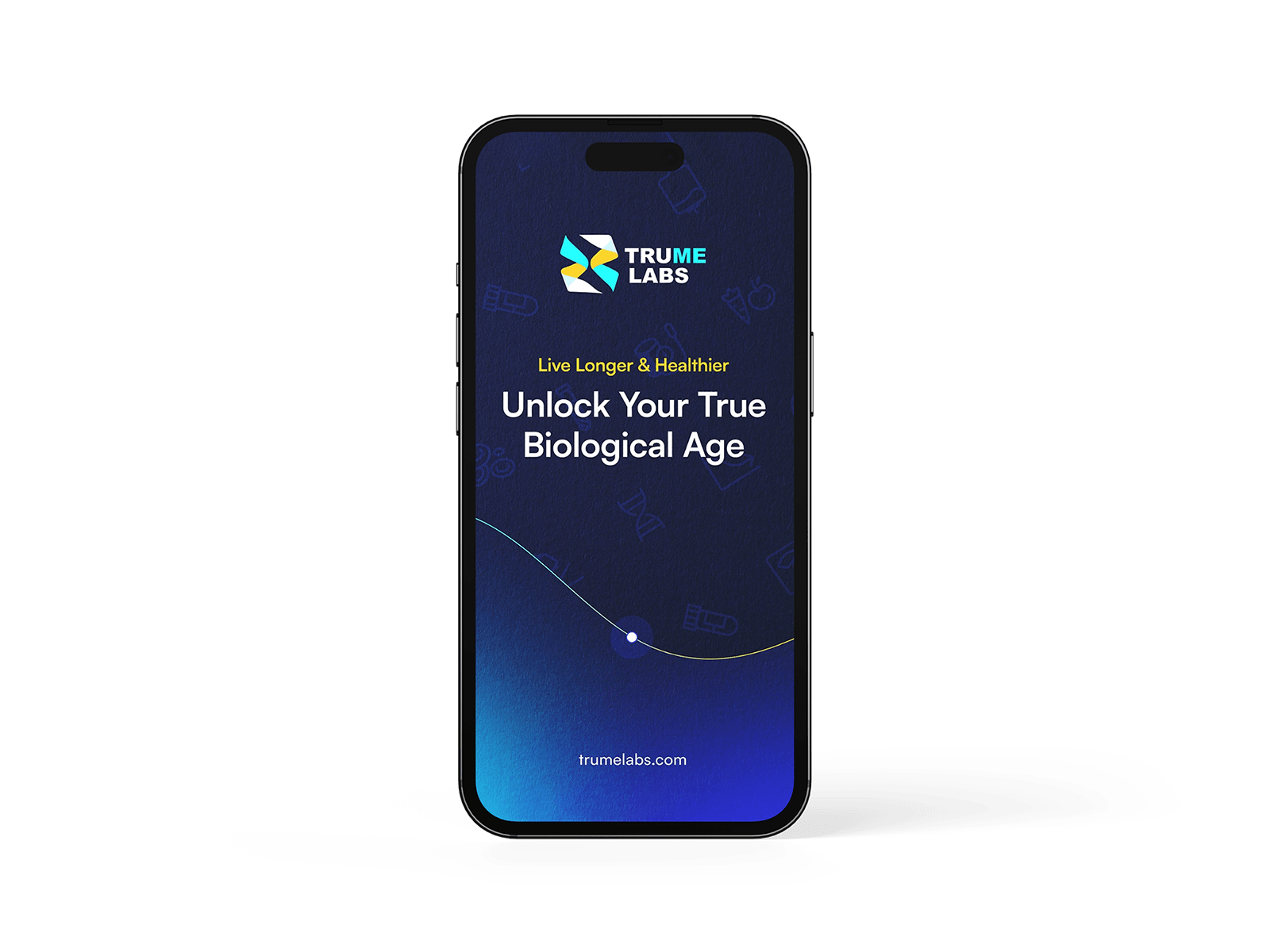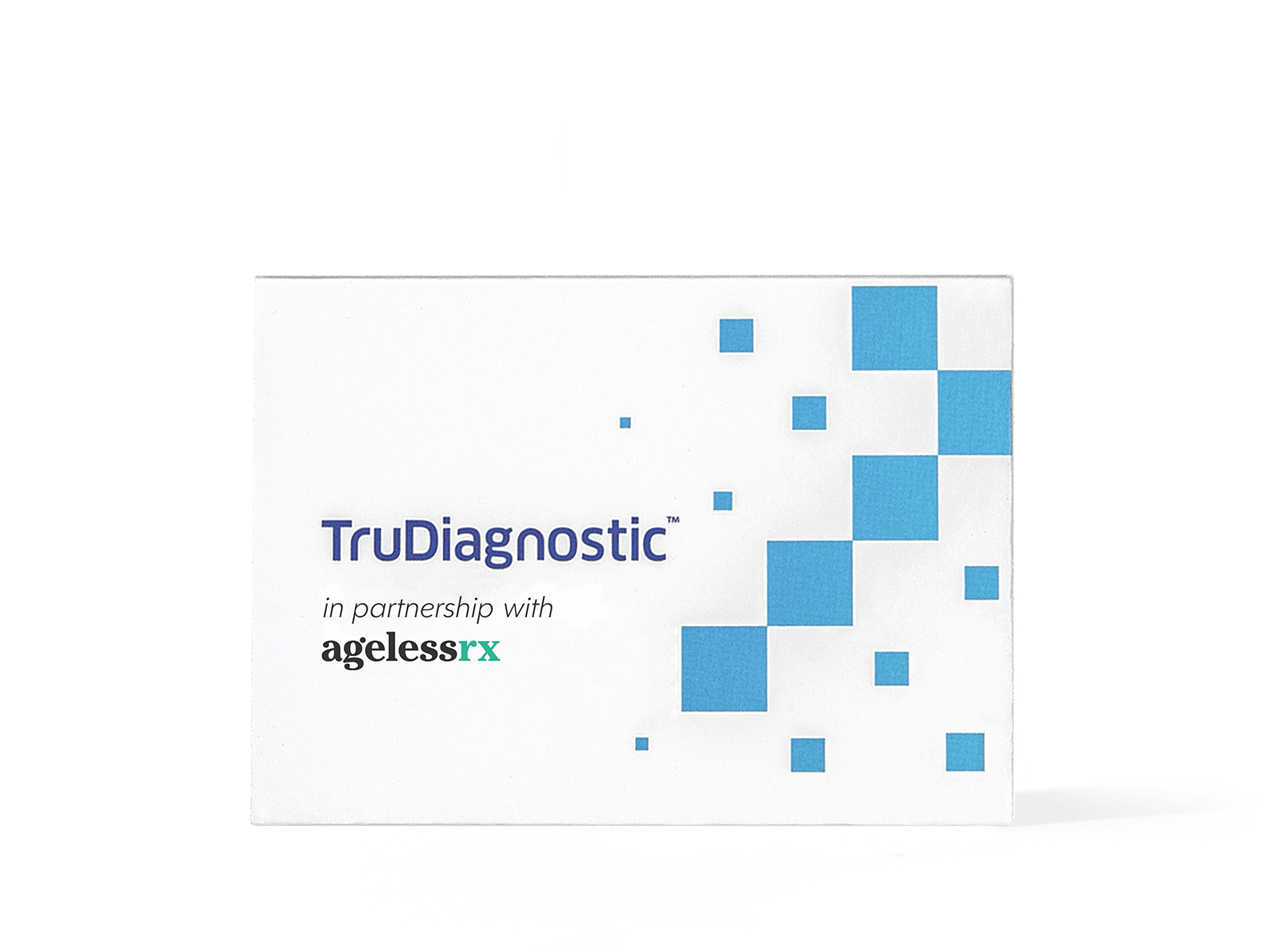SCIENCE & RESEARCH
Biological Age

What is a Biological Age?
From the moment of conception, we begin the aging process. While many of us are familiar with our chronological age (think how many birthdays you’ve celebrated), not quite as many of us are familiar with the concept of biological aging. Recent advancements in the line of biological age marking and tracking have emerged at a rapid pace, with many new technologies and processes devised to measure how old we really are on the inside.
In simple terms, your Biological Age is the age of your health. This is different from your chronological or calendar age. Ideally, you want your biological age to be younger than your chronological age. You can measure your biological age through various testing methods, ranging from at-home options to laboratory tests to metabolic testing.
What types of Biological Age testing exist?
Biological age testing has been around for decades, largely without success. The first successful epigenetic clock based on mice was created in 2009 by Axel Schumacher. Later, in 2011, Steve Horvath developed the first epigenetic clock which focused on methylation and demethylation–processes that manipulate chemical chains in DNA and thereby control the action of our genes.
In many ways, Horvath is considered the grandfather of biological age testing as his clock was the first to accurately measure humans. Many other scientists have emerged and new methods have since been developed. With such advancements, it has become possible to take DNA cell samples, analyze them using these various clocks, and accurately gauge biological age.

Over time, these various testing methods have become easier, cheaper and faster—ultimately giving you the ability to make informed decisions on your health. The science behind biological age testing continues to radically improve with various measurement categories available, such as epigenetic marker measurements, telomere length measurements, or metabolic age scoring measurements. So, what’s the difference between them?
| Methylation | Phenotypic | Telomere | Metabolic | |
|---|---|---|---|---|
| Test Method | Blood, Saliva, or Urine | Blood | Blood | Body Measurements |
| Key Differentiator | Mathematical algorithm analyzes DNA points to predict bioage | Multi-system algorithm utilizes 9 key biomarkers to quantify bioage | Measures lengths of telomeres (tails of RNA & DNA) to predict mortality risk | Calculates basal metabolic rate (BMR) to predict metabolic age |
| Scientific Support | ||||
| Level of Detail |
What is epigenetic methylation testing?
According to the CDC, epigenetics is “the study of how your behaviors and environment can cause changes that affect the way your genes work.” Science can now leverage epigenetic biomarkers via blood, saliva, or urine methylation testing.
Methylation works by manipulating chemical chains in DNA by adding what are referred to as “methyl tags” and thereby controlling the action of our genes. Methylation testing measures the patterns of these methyl tags on various DNA points. Then, artificial intelligence links those pattern values to other factors (such as weight or environmental factors) to predict mortality risk.
A 2016 study published in Aging concluded that, “Estimates of biological age based on DNA methylation patterns, often referred to as ‘epigenetic age’, ‘DNAm age’, have been shown to be robust biomarkers of age in humans.”

Scientists believe DNA methylation is a stable epigenetic mark that can be inherited through multiple cell divisions. During development and cell differentiation, DNA methylation is dynamic, but some DNA methylation patterns may be retained as a form of epigenetic memory. In other words, DNA carries important information along with it indefinitely. Measuring epigenetic markers has a degree of variability between inherited and environmental factors which leads to ‘ranges’ versus perfect assessments.
As evidenced above, epigenetic methylation testing has gained traction in more recent years as a more accurate measure to predict biological age. Metabolic scores, while helpful, can only do so much. Telomere testing is not consistently as accurate and requires a higher degree of technical expertise to successfully test. While this emerging science is still evolving, a combination of all available testing methods may be the best way to obtain the most accurate results.
What is phenotypic age testing?
In recent years, scientists at UCLA developed an innovative “new epigenetic biomarker of aging, DNAm PhenoAge, that strongly outperforms previous measures in regards to predictions for a variety of aging outcomes, including all-cause mortality, cancers, healthspan, physical functioning, and Alzheimer’s disease.” As recently as 2020, a study of over 700 patients in Mexico City concluded that “phenotypic age better represents age-related biological dysregulation than chronological age.”
A three phased analytical approach was used to develop DNAm PhenoAge calculations. PhenoAge was developed using NHANES III training data and employed a proportional hazard penalized regression model to narrow 42 biomarkers to 9 biomarkers and chronological age. To learn more, click here.

Can Biological Age be reversed?
The short answer is YES—and it’s why DNAm testing is so helpful. In simple terms, the process of adding methyl groups “tags” DNA. The pattern of these tags change during the course of our lifetime, especially as we make various lifestyle changes or incorporate a new longevity therapy. With DNAm testing, we can track these pattern changes and interpret our biological age over time. This is helpful to determine your personal rate of aging, as well as the effectiveness of any lifestyle changes or longevity interventions.
Purchase a BioAge test

At-Home Methylation Saliva Test
Starting at $99

Lab-Based Phenotypic Blood Test
Starting at $75

Online Phenotypic Calculator

At-Home BioAge Blood Test
Starting at $495
